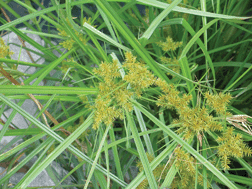Bio-monitoring for uranium using stream-side terrestrial plants and macrophytes†
Abstract
This study evaluated the abilities of various plant species to act as bio-monitors for environmental uranium (U) contamination. Vegetation and soil samples were collected from a U processing facility. The water-way fed from facility storm and processing effluents was the focal sample site as it represented a primary U transport mechanism. Soils and sediments from areas exposed to contamination possessed U concentrations that averaged 630 mg U kg−1. Aquatic mosses proved to be exceptional accumulators of U with dry weight (dw) concentrations measuring as high as 12 500 mg U kg−1 (approximately 1% of the dw mass was attributable to U). The macrophytes (Phragmites communis, Scripus fontinalis and Sagittaria latifolia) were also effective accumulators of U. In general, plant roots possessed higher concentrations of U than associated upper portions of plants. For terrestrial plants, the roots of Impatiens capensis had the highest observed levels of U accumulation (1030 mg kg−1), followed by the roots of Cyperus esculentus and Solidago speciosa. The concentration ratio (CR) characterized dry weight (dw) vegetative U levels relative to that in associated dw soil. The plant species that accumulated U at levels in excess of that found in the soil were: P. communis root (CR, 17.4), I. capensis root (CR, 3.1) and S. fontinalis whole plant (CR, 1.4). Seven of the highest ten CR values were found in the roots. Correlations with concentrations of other metals with U were performed, which revealed that U concentrations in the plant were strongly correlated with nickel (Ni) concentrations (correlation: 0.992; r-squared: 0.984). Uranium in plant tissue was also strongly correlated with strontium (Sr) (correlation: 0.948; r-squared: 0.899). Strontium is chemically and physically similar to calcium (Ca) and magnesium (Mg), which were also positively-correlated with U. The correlation with U and these plant


 Please wait while we load your content...
Please wait while we load your content...